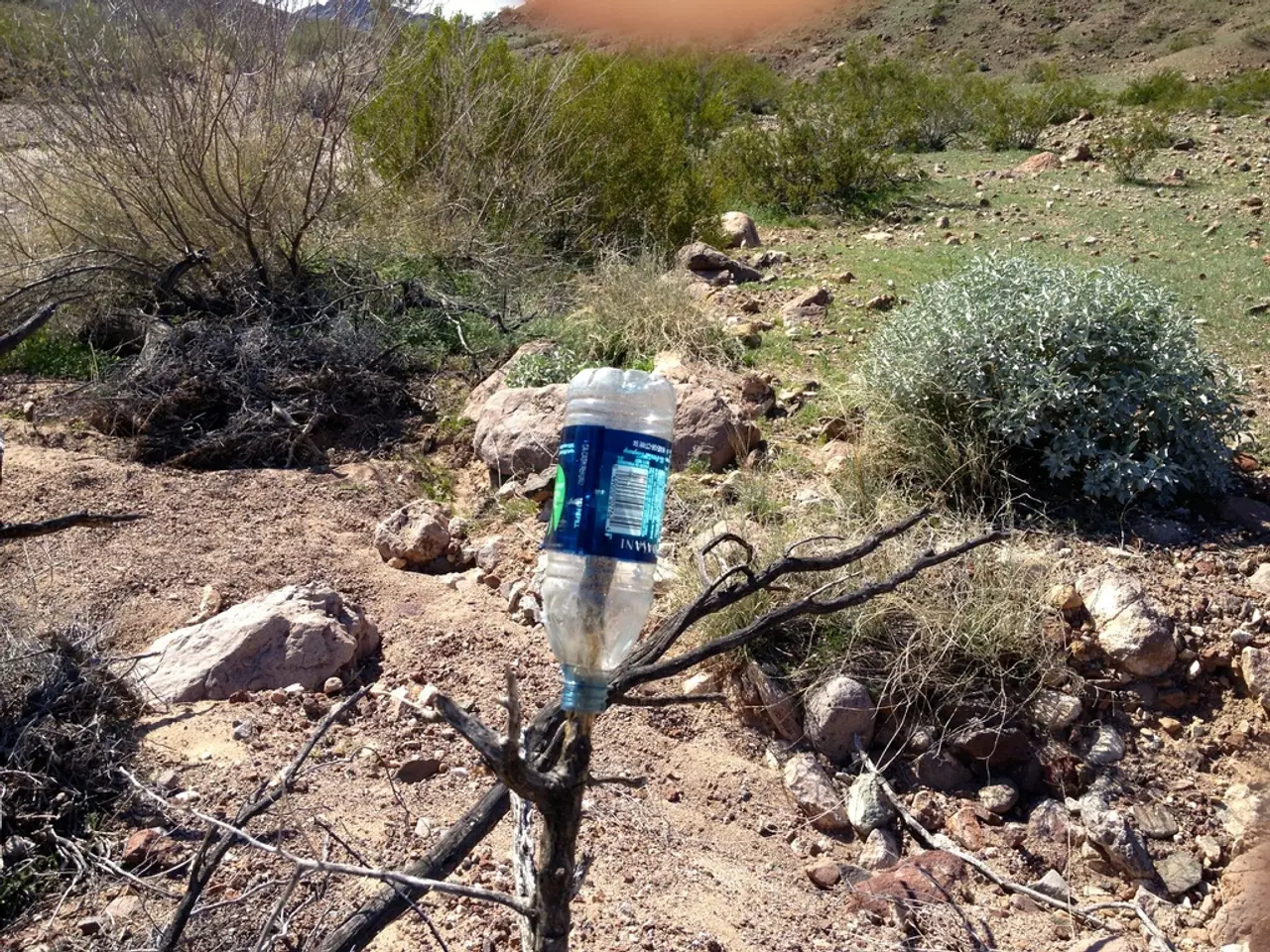Methods for Eliminating Earwigs in Your Garden: 5 Time-Tested Natural Approaches
In the world of gardening, earwigs can be a nuisance, causing damage to leaves, petals, and soft fruits with their irregular holes. However, there are several natural methods to manage these garden pests without resorting to harsh chemicals.
Diatomaceous Earth (DE)
One effective organic solution is Diatomaceous Earth (DE). When sprinkled around the base of plants in dry weather, DE damages earwigs' exoskeletons and causes dehydration. Reapplication is necessary after rain.
Beneficial Predators and Natural Enemies
Attracting natural enemies of earwigs like tachinid flies, birds, frogs, newts, beetles, chickens, ducks, and toads can help control their population. Planting dill, fennel, calendula, alyssum, and zinnias can attract these beneficial predators.
Soapy Water or Castile Soap Sprays
Spraying earwigs with a mixture of water and mild liquid soap (such as Castile soap) can disrupt their outer shell and kill them on contact. This spray can also be applied around garden beds and damp hiding spots as a deterrent.
Natural Repellents
Essential oil sprays made with peppermint, eucalyptus, or citronella diluted in water with a bit of dish soap can naturally repel earwigs. Neem oil can also disrupt feeding and reproduction of earwigs when sprayed on plants.
DIY Traps
Setting traps with oil, soy sauce, or damp cardboard can lure and capture earwigs, which can then be disposed of. Positioning shallow containers with soy sauce traps (equal parts soy sauce and vegetable oil) can help attract and trap earwigs.
Garden Maintenance
Reducing moisture by pruning lower leaves, improving airflow, removing mulch and plant debris, and eliminating damp hiding places can help prevent earwig colonization. Creating dry zones around foundations helps prevent earwig infestations.
Identifying Earwigs
Earwigs can be identified by their distinctive curved pincers (cerci) at the end of their bodies.
Additional Tips
Using gravel barriers around prized plants can protect them from earwigs. Strategic placement of mulch can help deter earwigs. Keep mulch at least 6 inches away from your home's foundation and use cedar mulch which naturally repels many insects.
Encouraging beneficial insects like tachinid flies can help control earwig populations. Sticky traps placed around vulnerable plants can help catch earwigs as they climb.
Managing compost piles properly can prevent earwig infestations. Installing weather stripping on doors and windows can prevent earwigs from entering your home. Most earwig activity happens at night since they're nocturnal insects. During the day, earwigs hide in dark, moist places like under mulch, rocks, or garden debris.
Using rolled-up newspapers in the garden at night (dampened slightly) can be an effective earwig trap. Checking traps in the morning and disposing of any captured earwigs can help control earwig populations.
In conclusion, by implementing these natural methods, you can create an effective, chemical-free integrated approach to managing earwigs in your garden safely and sustainably.
In addition to the methods mentioned for managing earwigs in the garden, maintaining a balanced lifestyle could also contribute to keeping your backyard free of these pests. For instance, keeping your home clean and tidy, especially near the foundation, can discourage earwigs from entering and colonizing.
While exploring fashion-and-beauty trends, consider investing in natural essential oils such as peppermint, eucalyptus, or citronella. Not only can these oils enhance your look, but they can also serve as effective natural earwig repellents when used to make DIY sprays.
During your travel expeditions, pay attention to local gardening practices and gather insights on how locals manage earwigs in their gardens. This knowledge might help you to improve your own gardening skills and techniques.
Lastly, when shopping for the perfect car, consider models with removable floor mats or undercarriage guards. These features can make it easier to clean and inspect your vehicle, helping to prevent unwanted earwig hitchhikers from finding their way into your home.




